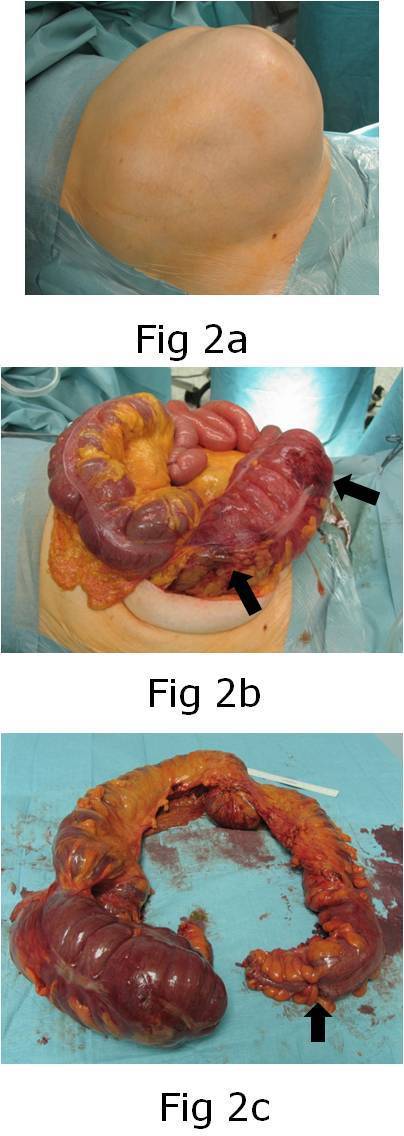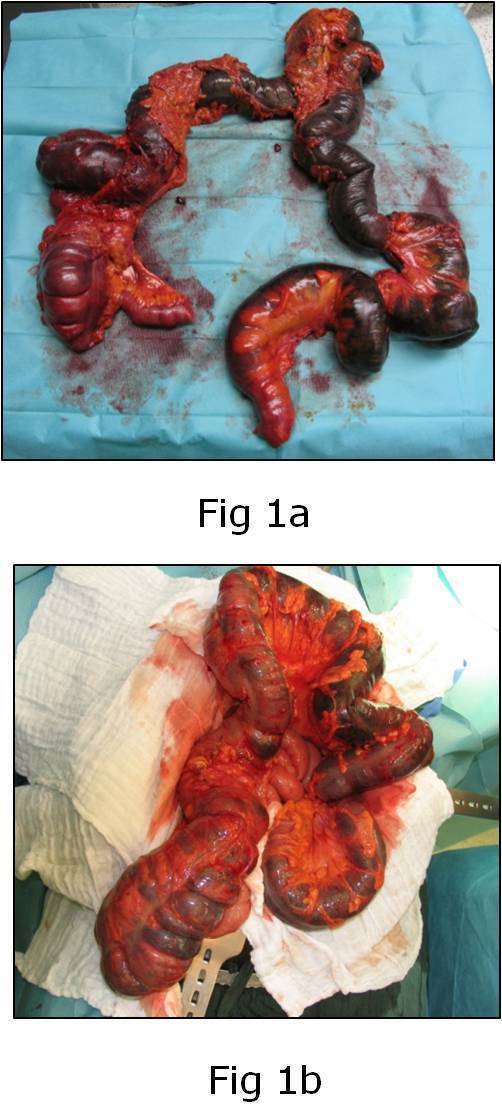|
Back to Annual Meeting Posters
Colonic Disasters Approached by Emergent Total Colectomy- Lessons Learned From 120 Consecutive Cases
Michael Schweigert*1, Attila Dubecz1, Norbert Solymosi2, Hubert J. Stein3, Dietmar Ofner1
1Department of General and Thoracic Surgery, Klinikum Nuremberg Nord, Nuremberg, Germany; 2Szent István University, Budapest, Hungary; 3Department of Surgery, Paracelsus Medical University, Salzburg, Austria
Objective:
Diverse abdominal emergencies result in irreversible devitalization of the colon. Mainly the very elderly are affected. Morbidity and mortality are significant while adequate surgical strategies are still controversially discussed. Aim of this study is to investigate the outcome of emergent complete colectomy with special respect to results in the very elderly.
Material and methods:
Records of 120 consecutive patients who underwent emergent subtotal or total colectomy at a German tertiary referral hospital were reviewed in a retrospective study. Indication groups as well as age groups were formed for statistical analysis.
Results:
There were 73 male and 47 female patients with a mean age of 70 years. Altogether 81 total and 39 subtotal colectomies were performed for mainly ischemia related large intestine infarction (62), obstructing carcinoma (17), fulminant diverticulitis (10), ulcerative colitis (9) and pseudomembranous colitis (7).
Mean ASA score was 3.47. Severe sepsis or even septic shock was present in 82 cases. In-hospital-mortality was 42. Colectomy for ischemic bowel infarction showed significant higher mortality than for pseudomembranous colitis (p=0.018) whereas there were no further significant differences amidst the indication groups. Between the age groups there was neither significant difference in mortality nor in prevalence of sepsis. However, sepsis (OR: 16.81; 95% CI 3.89-153.32; p<0.001), ASA score ≥ 4 (OR: 5.84; 95% CI: 2.33-16.00; p<0.001) and total colectomy (OR: 4.40; 95% CI: 1.57-14.12; p=0.02) were associated with higher mortality.
Conclusions:
Emergent colectomy provides a practical solution for a wide range of heterogeneous abdominal emergencies resulting in colonic disintegration and necrosis. Outcome depends on the underlying disease, ASA score, extent of colonic resection and presence of sepsis whereas age shows no significant influence. Therefore, we conclude that advanced age itself should not be regarded as contraindication for emergent colectomy.
Figure 1: Ischemic colitis with transmural infarction Fig 1a shows complete gangrene of the colon in an 82-year-old man. The specimen is ischemic and necrotic from cecum to sigmoid colon. Fig 1b shows a colectomy specimen from a 78-year-old woman. Easily visible are multiple black colored sections resembling transmural gangrene.
 
Figure 1: Ischemic colitis with transmural infarction Fig 1a shows complete gangrene of the colon in an 82-year-old man. The specimen is ischemic and necrotic from cecum to sigmoid colon. Fig 1b shows a colectomy specimen from a 78-year-old woman. Easily visible are multiple black colored sections resembling transmural gangrene.

Figure 2: Acutely obstructing carcinoma of the left colon Due to acute large bowel obstruction the abdomen is monstrously distended. Fig 2a shows the female patient already placed in supine position ready for surgery. The large intestine is bulging out immediately after laparotomy (Fig 2b). Serosal rupture and bursting of the tenia (arrows) are clearly visible. Some parts of the distended colon show ischemic lesions. Fig 2c shows the specimen following total colectomy. An acutely obstructing carcinoma of the sigmoid colon (arrow) was causative for the ileus. Again serosal tears and bursting is obvious.
Back to Annual Meeting Posters
|



